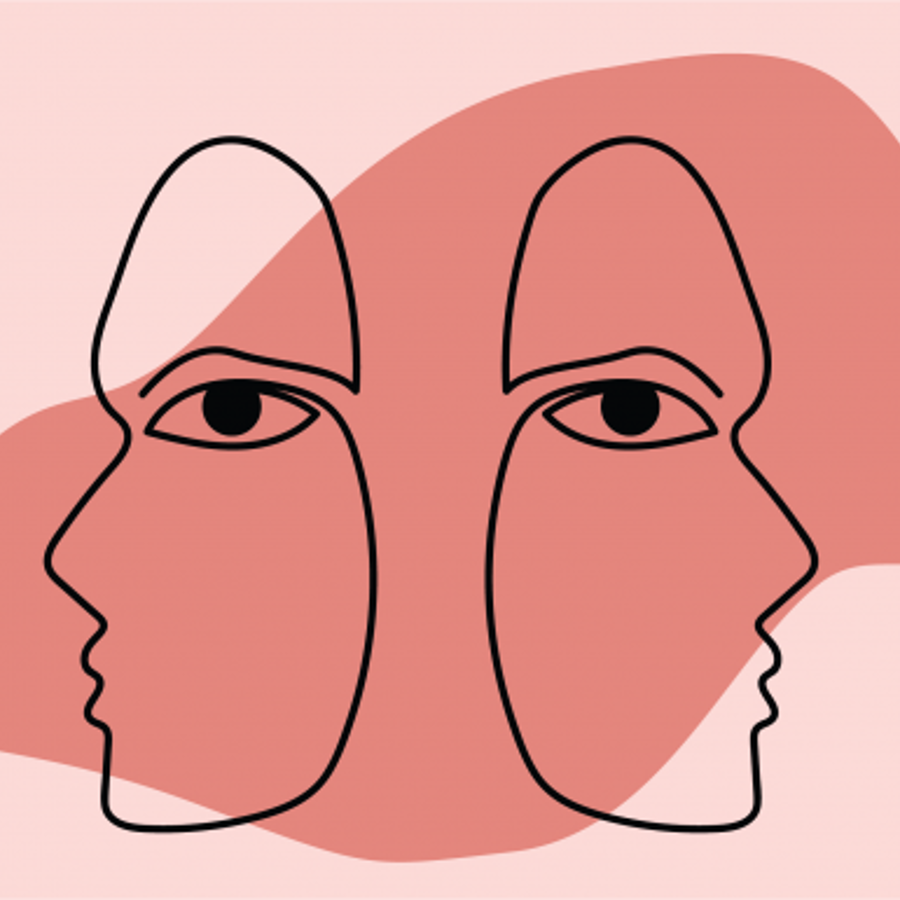
If identical twin A donates sperm to twin B’s partner, will the child resemble twin B?
February 2, 2007

- Related Topics:
- Epigenetics,
- Complicated family trees,
- Relatedness,
- Twins
A curious adult from Pennsylvania asks:
"I have two identical twin male cousins, let’s call them Cousin A and Cousin B. Cousin A is able to have children but Cousin B is not. If Cousin A was to donate sperm to Cousin B’s wife, would the child share the same DNA as Cousin B? Would the child have some of the same traits as Cousin B (such as hair, eyes, and height)? Would a paternity test be able to distinguish if Cousin A or Cousin B is the father?"
Interesting bunch of questions! The quick answer is that broadly speaking, the DNA in the sperm of identical twins is very similar. Not entirely identical, but pretty close.
So close in fact that any minor differences couldn't be found with a simple paternity test. If someone looked at all their DNA they might be able to tell the difference. But no one does that now, as it takes too long and is too expensive (although this may change in the future).
What all of this means is that unless the minor changes affect some obvious trait, the range of possible children is the same regardless of which twin fathers them. But the range of possible children is huge!
The Same, but Different
As I am sure you've noticed, many siblings can look pretty different. Even though they have the same parents, and therefore come from the same pot of DNA.
What this tells us is that we can't say that certain traits will come through. We don't know even from looking at someone's DNA whether their child will share traits like hair and eye color or height. For a lot of these traits you just can't predict the outcome.
And where you can, it depends on what genes each parent has. For example, if a father has many recessive genes and the mother has many dominant genes, their child may not look much like the father.
This is why a blue eyed man can have a brown eyed child. Or a woman with black hair might have a redheaded child.
So there is a lot of natural variation even with the same mother and father. This is what makes us all unique. But could the small differences between the twins' DNA affect a child's traits? Possibly.

Close (to identical), but not too close
Before getting into this, let's first explore why there are any differences at all. Since identical twins happen when an embryo from a single fertilized egg splits in two, they do start out with the same DNA.
But over time, the DNA in each twin changes. The DNA picks up small errors as each twin goes through life. And over time, each twin starts to use their DNA differently. (These are both true for all of us. They are just more noticeable in identical twins.)
The DNA errors are a natural byproduct of life. We all start out as a single cell. Eventually we end up with 50 or 100 trillion cells. To get there, our cells need to divide like crazy. And each time a cell divides, it needs to copy its DNA.
Now, the machinery that copies and proofreads our DNA is incredibly accurate. But not so perfect that the occasional mistake doesn't slip through. If the mistake ends up in a sperm cell, then it can be passed on to the person’s child.
And as males, these twins have an even higher chance for having DNA changes that get passed down. Why? Because of the different ways sperm and eggs get made.
Eggs are made early on in development while sperm are constantly being made. What this means is that cells are constantly dividing to make sperm. And the more dividing, the more copying, and the greater the chance for a mistake.
So men have more of these types of errors in the DNA of their sperm than women do in their eggs.
And this isn't the only way that errors can happen in DNA. The food we eat, the sunlight we enjoy, the air we breathe can all change our DNA.
Because these mistakes are random, each brother will have a different set of these changes. And even these won't be the only differences between your twin cousins' DNA.
There are also differences in how each twin uses their DNA. This is why identical twins aren't really identical -- if you know identical twins you can certainly tell one from the other!
This difference comes partially from chemical marks called “epigenetic tags” that individuals gain throughout their lives. Things like our diet, stress, exercise habits, and environmental pollutants can all change our epigenetics ... and therefore the way we use our genes.
A lot of these epigenetic differences are lost when sperm is made. But not all of them.
There are examples of where these sorts of changes are passed down. For example, there was a food shortage at the end of World War II.
Not surprisingly, people who were pregnant at this time had children who were smaller than expected. But what was surprising was that their grandchildren were smaller too. In other words, the food shortage affected how the grandkids used their DNA.

Epigenetics and visible traits
OK, so there are a few changes between the twins' DNA. Are any of them likely to affect the children?
Most of the time these changes will be invisible. A whole lot of what our DNA does is invisible to us. And not all our DNA is used in every cell.
But some of these changes could affect a trait we can see. Let's look at an example to see how these sorts of changes might affect a specific trait.
Imagine that everyone in the twins’ family has had brown eyes for as long as anyone can remember. What this means in terms of eye color genes is that they have certain versions of the OCA2 gene that make brown eyes
Now imagine that when one twin’s DNA is copied, it gets a mistake in the OCA2 gene so that it now tells the eye to make blue eyes. Since this twin still has a brown version of the OCA2 gene, he won't have blue eyes. But he could pass it onto his kids.
This twin could now have a blue-eyed child but the other twin couldn't. This is a big difference in appearance.
But these sorts of changes are not all that common. The DNA of each identical twin is nearly identical. So most likely the two twins would produce nearly the same range of DNA possibilities in each of their sperm. Of course, as I said, it is a pretty wide range.

Author: Dr. D. Barry Starr
Barry served as The Tech Geneticist from 2002-2018. He founded Ask-a-Geneticist, answered thousands of questions submitted by people from all around the world, and oversaw and edited all articles published during his tenure. AAG is part of the Stanford at The Tech program, which brings Stanford scientists to The Tech to answer questions for this site, as well as to run science activities with visitors at The Tech Interactive in downtown San Jose.
 Skip Navigation
Skip Navigation
